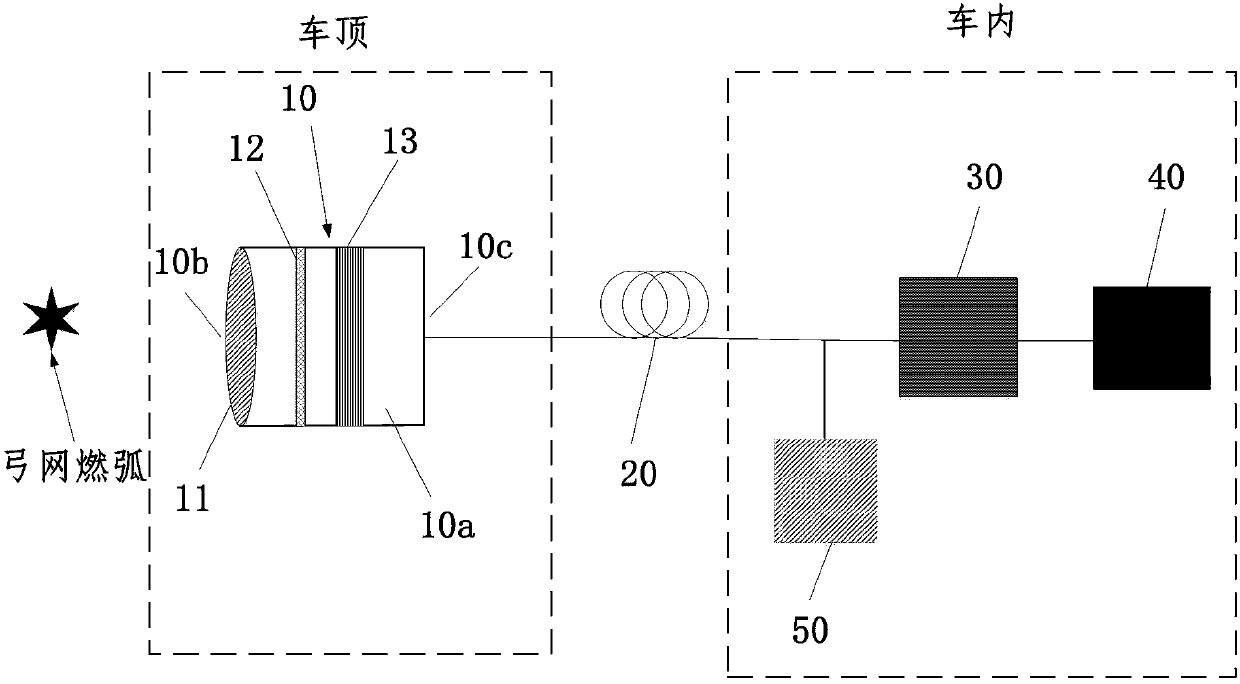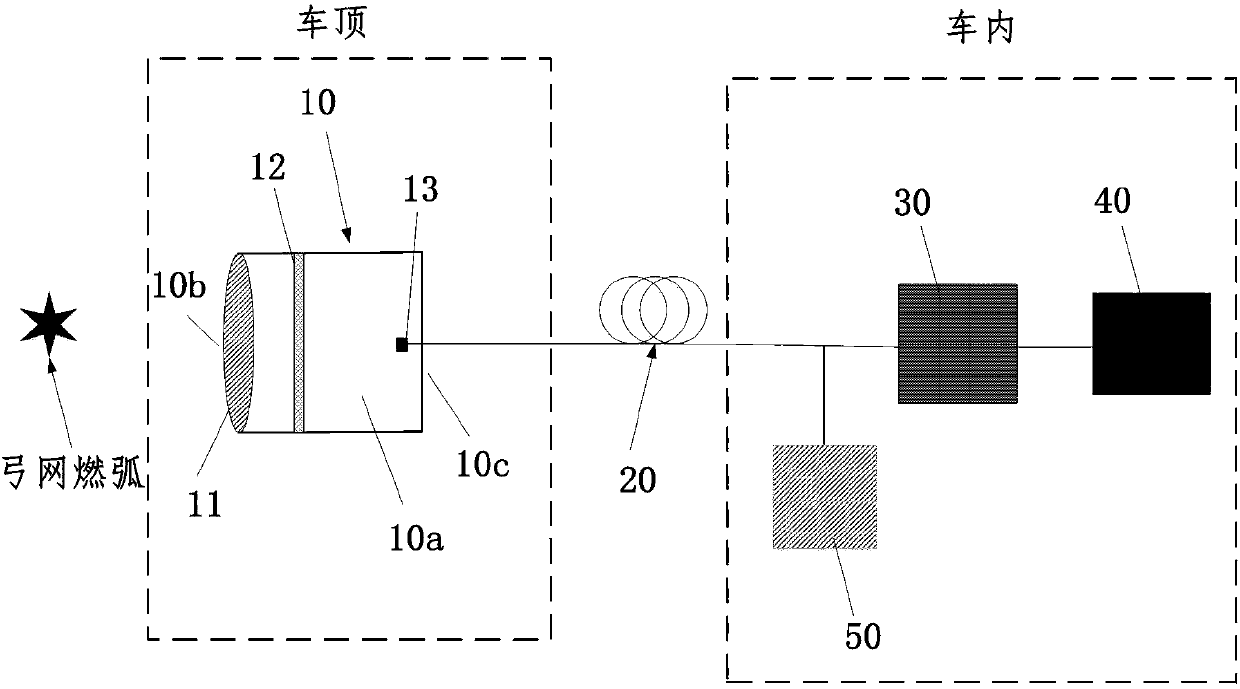Non-contact bow net arcing detection system
A detection system, non-contact technology, applied in the direction of testing the dielectric strength, using optical methods to test, etc., can solve the problems of high system cost, affecting the detection sensitivity of the system, and the weak discharge point cannot be effectively detected, etc., to achieve The effect of improving detection sensitivity, reducing production cost, and ensuring safety
- Summary
- Abstract
- Description
- Claims
- Application Information
AI Technical Summary
Problems solved by technology
Method used
Image
Examples
Embodiment 1
[0028] figure 1 It is a schematic structural diagram of a non-contact pantograph-catenary arc detection system according to Embodiment 1 of the present invention.
[0029] refer to figure 1 , The non-contact pantograph-catenary arc detection system according to the embodiment of the present invention includes: a light collection and conversion device 10 , an optical fiber 20 , a photoelectric conversion circuit 30 , a signal processing device 40 , and a self-test signal generating device 50 . The light collection and conversion device 10 is installed outside the roof of the train. The photoelectric conversion circuit 30, the signal processing device 40, and the self-test signal generating device 50 are installed in the train car.
[0030] The light collection and conversion device 10 is used to focus received light and to convert ultraviolet light into visible light. In this embodiment, converting the ultraviolet light into a visible light signal and performing detection ca...
Embodiment 2
[0047] figure 2 It is a schematic structural diagram of a non-contact pantograph-catenary arc detection system according to Embodiment 2 of the present invention.
[0048] refer to figure 2 , the difference from Embodiment 1 is that the fluorescent layer 13 is disposed on the optical fiber 20 .
[0049] Specifically, in this embodiment, the optical fiber 20 extends into the receiving cavity 10a, the optical fiber 20 includes a light incident surface relative to the filter 12, and the fluorescent layer 13 is attached to the onto the glossy surface. It can be seen that the solution of this embodiment can not only fully convert the ultraviolet light incident on the optical fiber 20 into visible light, but also reduce the amount of the fluorescent layer 13 and reduce the cost.
Embodiment 3
[0051] image 3 It is a schematic structural diagram of a non-contact pantograph-catenary arc detection system according to Embodiment 3 of the present invention.
[0052] refer to image 3 , different from Embodiment 1, the light collection and conversion device 10 of this embodiment does not include a filter 12 .
[0053] Specifically, in this embodiment, the light collection and conversion device 10 includes an optical lens 11 , an optical film 14 disposed on the surface of the optical lens 11 , and a fluorescent layer 13 .
[0054] The housing cavity 10a has a bottom end 10c opposite to the open end 10b, the optical fiber 20 is connected to the bottom end 10c, and the fluorescent layer 13 is disposed between the bottom end 10c and the optical lens 11 .
[0055] The optical film 14 is used to filter the received light to obtain ultraviolet light. Further, the optical film 14 can transmit ultraviolet light but cut off visible light.
[0056] The optical lens 11 is used t...
PUM
 Login to View More
Login to View More Abstract
Description
Claims
Application Information
 Login to View More
Login to View More - Generate Ideas
- Intellectual Property
- Life Sciences
- Materials
- Tech Scout
- Unparalleled Data Quality
- Higher Quality Content
- 60% Fewer Hallucinations
Browse by: Latest US Patents, China's latest patents, Technical Efficacy Thesaurus, Application Domain, Technology Topic, Popular Technical Reports.
© 2025 PatSnap. All rights reserved.Legal|Privacy policy|Modern Slavery Act Transparency Statement|Sitemap|About US| Contact US: help@patsnap.com



